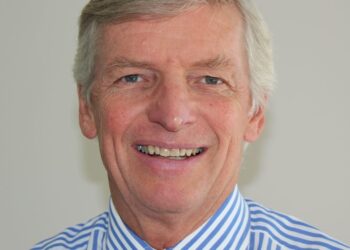IMPROVING GLOBAL data, a stabilised and lower Australian dollar (AUD) and a lower interest rate environment are all good news for investors and will help drive the cyclical earnings recovery that markets have been waiting for.
All things being equal, at Equity Trustees we expect the Australian share market to continue its upward momentum. Looking at the current equity valuations and the outlook for future earnings, we anticipate a target of around 5,450 for the ASX by the end of December, and around 5,750 by the middle of next year. Personally, I would not be surprised if the psychologically important 6,000 milestone was reached before 2015.
Domestically, valuations are now fair value, but the market requires a lower AUD as well as a lower rate environment to fuel the next phase of growth. Fortunately, a lower AUD and lower interest rates are likely scenarios, and the benefits of these will feed through to improved business conditions and therefore earnings.
Of course, events overseas continue to have an enormous impact on the Australian market.
In the short term, the key global challenge is how the United States works through the current fiscal debate. The Federal Reserve has helped out by delaying the bond taper to assist; once we get through this shorter-term challenge, the market can then prepare for the Fed to start the taper in early 2014.
The delay of the current quantitative easing (QE) program in September was without doubt a big surprise for investors, given the US Fed had started to prime the market since May for the taper to begin. When actions are the opposite of language, there are clearly some concerns at monetary policy HQ. In the meantime, the market is back to data-watching to see further evidence of a more broad-based US labour market recovery pushing the taper to begin in early 2014.
In our view, the delayed quantitative easing will be supportive for commodities, commodity currencies and emerging markets in the shorter term.
Some of the other key areas for investors and their advisers to consider include:
AUD
While consensus was increasingly building for a mid to low AUD by the year end, our expectation is for a 0.90-0.95 range for the AUD until year end, reaching 0.80-0.85 one year out. The delayed taper by the Federal Reserve will support the higher AUD in the short term, which remains a headwind for earnings and an ongoing concern for the Reserve Bank of Australia (RBA).
Any move back towards parity would be detrimental for the current early signs of a strong earnings-led recovery to take hold. Despite the improving global growth outlook, particularly China, the Australian economy has already shown clear signs it will be unable to cope very well with a persistently higher AUD.
INTEREST RATES
Interest rates are expected to move lower and remain low until late 2014. Business confidence in Australia has remained subdued in recent years and the recent rebound following the federal election is a strong positive sign.
The easing bias persists and the cash futures market is still anticipating a lower cash rate in the March quarter of 2014. However, the RBA needs to be more aggressive with rate cuts to underpin the recovery and prevent the unemployment rate rising above six per cent.
EQUITY VALUATIONS
Overall, equity valuations are not cheap compared with the historical benchmark, but this should not be alarming for investors. In short, equity valuations are currently fair value, with the multiple around 14.3x. The slow improvement in global conditions versus previous years would suggest that the multiple would naturally expand, with both the numerator and denominator moving higher. The large macro shocks exhibited through the market in recent years, particularly Europe, look to be behind us.
Higher bond yields will be a potential headwind for earnings initially. Economic activity will need to accelerate to compensate and help drive earnings. On balance, we remain positive for equities in 2013 and 2014, and this remains a high conviction view. ASX TARGET
With one quarter remaining of the 2013 calendar, our long-standing year end ASX200 target of 5,450 looks very probable. In the longer term, the target is 5,750 for 30 June 2014 and 5,950 for the 2014 year end.
The question many investors are debating is: How long will it take for the ASX200 to reach the pre-GFC peak of 6,828, achieved in November 2007?
The main point to highlight is that due to the extraordinary amount of capital raisings during the crisis, this previous high is no longer the appropriate target. In my view, given there was around 10 per cent of market capitalisation at that time, the ‘new’ adjusted target that better reflects like-for-like is around 6,150.
There are always assumptions used to forecast future earnings, and a number of preconditions need to align. There will need to be a lower cash rate (2.25 per cent or lower) and importantly, a lower for longer cash rate outlook to help drive a more robust credit growth cycle.
Also, the AUD will need to trade in the low 0.80 levels by late 2014. This will help corporate Australia build on the early good signs of improved business confidence following the election.
SECTOR OPPORTUNITIES
The resource sector remains compelling for investors as volume growth continues to expand. However, recent capital management and cost outs will dominate the sector.
Further, the non-resource sector parts of the economy are expected to contribute to more growth, therefore contributing more to earnings in the ASX200. We also expect improvement in the housing cycle, infrastructure and general capital expenditure (CAPEX) outside of resources for 2014.
With a lower AUD outlook for 2014 anticipated, the exposure to companies that benefit from USD earnings remains a core portfolio theme for us. Brambles (BXB), Computershare (CPU), QBE Insurance Group (QBE), Macquarie Group (MQG), News Corporation (NWS), Westfield Group (WDC), ResMed (RMD), CSL and Cochlear (COH) are all likely long-term beneficiaries of a lower and more stabilised AUD.
BOND MARKETS
A key headwind will be the higher long bond yield that results from any recovery and importantly, when the Fed begins to taper in early 2014.
Movements in the Australian 10-year bond yield are more aligned with the US long bond movements. The higher bond yields in the recent quarter have been a key detractor to recent bond returns. The year-to-date return for the Australian UBS Composite Bond Index is now 1.64 per cent – well below the long-run expectation of around six per cent annually. Clearly, investors have been compensated with better equity returns.
In conjunction with a lower Australian cash rate, this implies a very steep yield curve in Australia, which is broadly supportive for a recovery. However, a spike in the long bond yield will always be a headwind that equities will need to adjust to. The recent spike in the 10-year bond yield suggests yields on a relative basis look less compelling for the equity dividend theme.
While the average equity yield to bond yield has been impacted in recent years due to the excessive market movements, equity valuations suggest, going forward, it is more of a growth versus dividend story. Of course, equity portfolios will need to have both an income and growth theme, but a little more emphasis on growth on balance is the expectation for the year ahead. «
George Boubouras is chief investment officer at listed financial services company Equity Trustees Limited (EQT)
About George Boubouras
George Boubouras is chief investment officer at listed financial services company Equity Trustees Limited (ETL).



